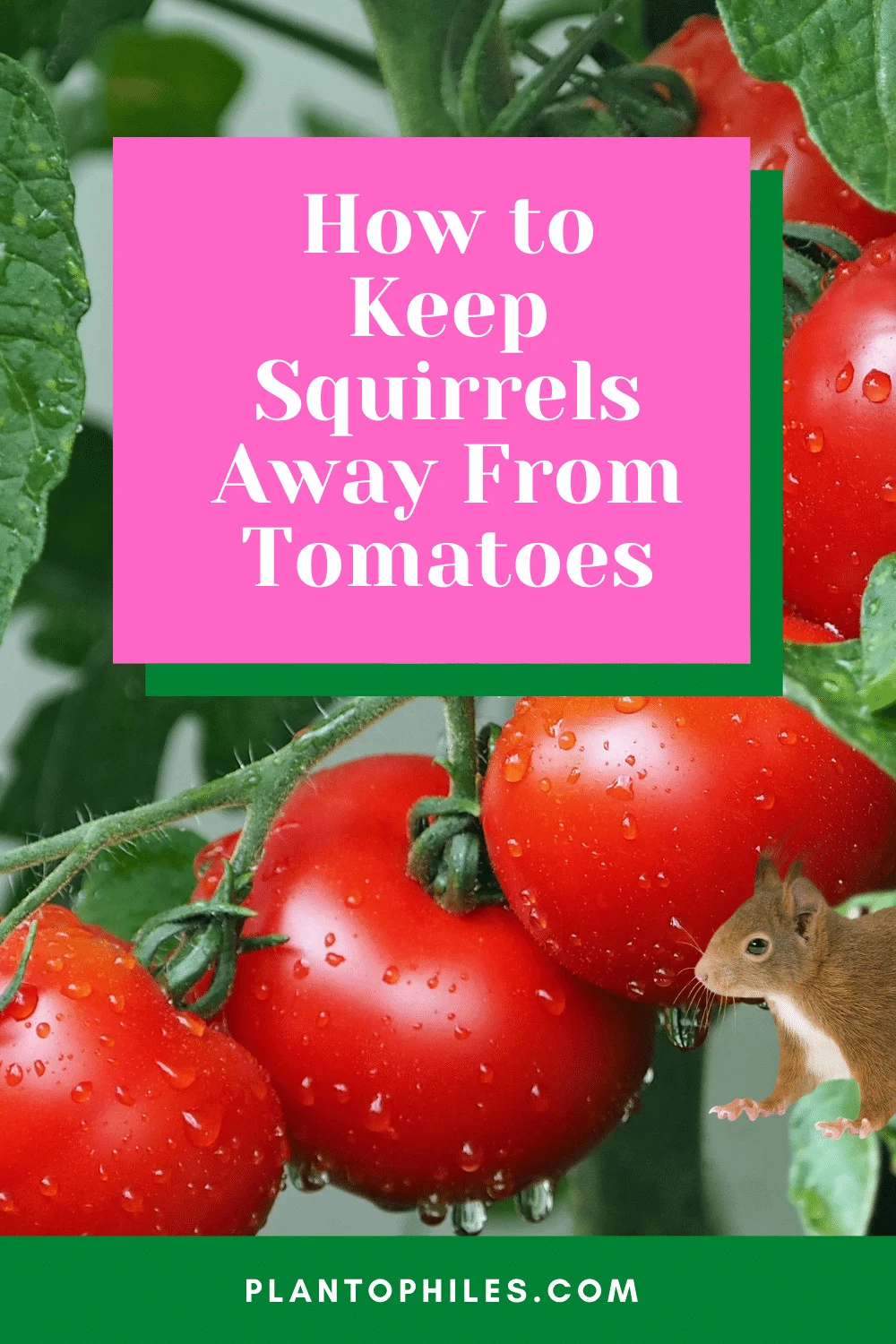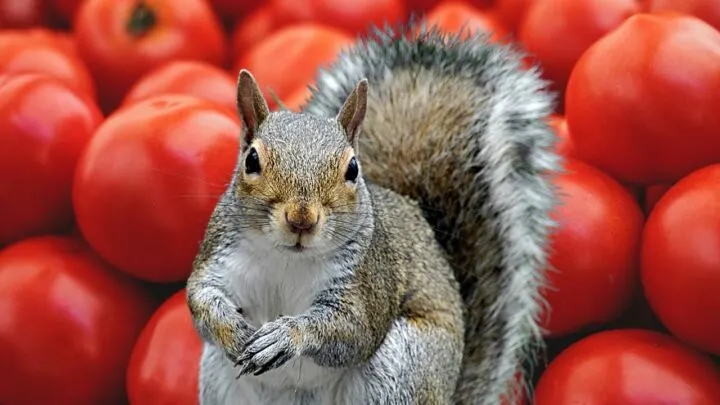Controlling squirrels can be challenging, especially during tomato season when the little pests come down to your garden for a full buffet!
It takes time and care to grow and look after tomatoes, and therefore, it can be extremely frustrating waking up and seeing the damage done to your plants by neighboring squirrels.
Read the following methods and techniques to keep squirrels away from your tomato plants to avoid this issue from happening!
Table of Contents
How to Keep Squirrels Away From Tomatoes
To keep squirrels away from tomatoes eliminate squirrel attractions, cage your plants, use natural repellants, and create some noise that can scare these rodents off. You can also use motion sensor lights, sprinklers, and mothballs to keep squirrels at bay.

Keep Squirrels Away From Tomatoes – 7 Best Solutions
Squirrels are said to eat everything from nuts to insects, according to Animalfoodplanet. They will even eat things that are not good for them, such as candy.
To keep squirrels away, you must put in the work. Here are 7 of the best solutions how to keep squirrels away from your tomatoes:
1. Remove squirrel attractions
One of the ways to control and keep away squirrels from your garden is to remove all the things that attract them there in the first place.
If you have trash cans outside or food scraps lying in the garden, this will attract squirrels.
Place your trash cans inside, or ensure they are firmly closed if you leave them outside.
Bird feeders are also a big attraction for squirrels.
The bird feed lures them in, and there is chaos after that! If you have tomatoes that are ripening it is best not to put bird feed out.
Acorn trees and other nut-bearing plants are a major attraction for squirrels. Growing the two plants together can be troublesome.
I would advise that if you’re growing tomatoes do it far away from these plants.
It would be a good idea to replant these nut-bearing plants somewhere else to eliminate the attraction of squirrels.
2. Put a cage around your plant
Putting a cage around your tomato plants is a great way to make sure they stay protected from squirrels.
If you find it impossible to get rid of the little guys, then setting up a caging system might be worth your time.
The best materials to build a cage for your tomatoes are bird wire, netting, metal rods, and cable ties.
Place the metal rods around your tomato patch. After that, take the bird wire and surround the metal rods of the patch.
Then, use the cable ties to tie the bird wire to the rods and stabilize it.
Once you have created the outer fence, you need to create the roof of your cage.
This can be created by using bird wire or netting.
When creating the top roof of your cage, ensure it is high enough not to restrict your plants or squish your tomatoes.
If your tomato plant has a livestock panel supporting its growth, connect the bird wire or netting to the livestock panel for stability.
The cable ties connect the bird wire or netting to the livestock panel. This will ensure that no squirrels get into your tomato patch!
If you don’t have bird wire or netting and can’t get to a local gardening center, it might be time to get creative and build a cage using your home materials!
Ensure that the fencing material you use is sturdy, and ensure that the cage has no large holes!
Squirrels are small and therefore need a wiring or cage to restrict them from entering your tomato patch.
3. Use a natural repellant
Another effective method to fend off squirrels from your garden and your tomato patch is to use natural repellants.
Some great repellants you might find at home consist of ground-up coffee, cayenne pepper, black pepper flakes, and garlic flakes.
The taste and smell of these repellents repulse squirrels.
Sprinkle one or more of them around the soil of your plants. The harsh smells and taste from the shavings will immediately scare them off and protect your tomatoes.
Growing mint close by your tomato patch is another way to repel squirrels. The strong smell of the mint will scare them off.
This also works great to keep squirrels away from potted plants.
4. Motion sensor sprinklers
This is an effective method if you are willing to buy and set up motion sensor sprinklers.
Place the sprinklers all around your tomato patch. When the sprinkler system senses movement, it will turn on.
The water will most likely frighten the squirrels and chase them away! Squirrels will not try and steal your tomatoes when the sprinkler system is on.
5. Motion sensor lights
Similar to the sprinkler system, these lights will turn on as soon as they sense any movement.
The light will frighten the squirrels away.
However, this is not the most effective method as it will only work at night, and many squirrels are active during the day.
6. Mothballs
Place a handful of mothballs inside a plastic bottle and close the lid. Leave the bottle with mothballs outside next to your tomato patch.
Don’t worry. Squirrels don’t eat mothballs, so this method will not kill them.
Just the smell of the mothballs is enough to repel the squirrels.
This method is currently illegal in most countries and states.
7. Create some noise
Creating some noise in the garden is a good way to frighten off pesky squirrels.
Squirrels do not like sudden loud noises as they are unfamiliar to them. Unexpected noises cause discomfort and disorientate squirrels.
Putting wind chimes around your tomato patch will help scare the pests off. When the wind blows, and the chimes move, the squirrels will be frightened and run away.
Keeping a radio in your garden by your tomato patch is another way to create noise.
The sound of music and people talking will give the illusion to the squirrel that there are people around.
The squirrel will be frightened by the noise and refrain from eating your tomatoes.
This is how you keep squirrels away from tomatoes.

Daniel has been a plant enthusiast for over 20 years. He owns hundreds of houseplants and prepares for the chili growing seasons yearly with great anticipation. His favorite plants are plant species in the Araceae family, such as Monstera, Philodendron, and Anthurium. He also loves gardening and is growing hot peppers, tomatoes, and many more vegetables.


